The post describes an easy method of making an ultra violet water purifier circuit using ordinary electronic components.
How UV is Used as Germicidal
Ultraviolet germicidal irradiation (UVGI) is a water treatment method which employs UV or ultraviolet light rays in the range of short wavelength in order to eliminate the present pathogens and microorganisms.
The technology involves short wavelength UV rays (UV-C) which are effective against all types of germs and microorganisms.
The introduced UV rays target the nucleic acids of the pathogens and cripple them by disorienting their DNA structure.
As a result the germs are unable to carry on with their normal cellular operations and ultimately succumb under the radiation.
Sun is Largest Generator of UV Rays
The sun is the major and strongest source of UV rays which includes UV rays of all wavelengths. The harmful ones are effectively absorbed by our planets ozone layer and that's why life could sustain so far on this planet.
Commercially or rather artificially generated UV sources include electrically activated devices such as LEDs, neon lamps, black light bulbs or wood's lamp, xenon flash bulbs, welding arcs and similar arc discharges.
Even an ordinary incandescent bulb generates UV rays but in small quantities compared to the other included light spectrums.
For disinfecting water the most effective artificial sources are perhaps the wood's lamp, and special UV LEds.
However both these devices are special items not easily available in the local market, moreover UV LEds are extremely costly devices.
Using Xenon Bulb
Xenon lamps which are normally seen in camera flashes also emit considerable amount of UV rays, although it might include the entire spectrum of the wavelength.
According to me if you want to make a homemade UV water purifier circuit, a camera flash xenon tube can be the best option, since these can be easily procured and constructed at home.
You can retrieve an entire flash electronic section from your camera for making this project or alternatively make an AC operated xenon tube flasher circuit at home and then use it for the proposed UV water purifier circuit.
A simple xenon flash circuit can be seen in the following diagram:
Circuit Diagram
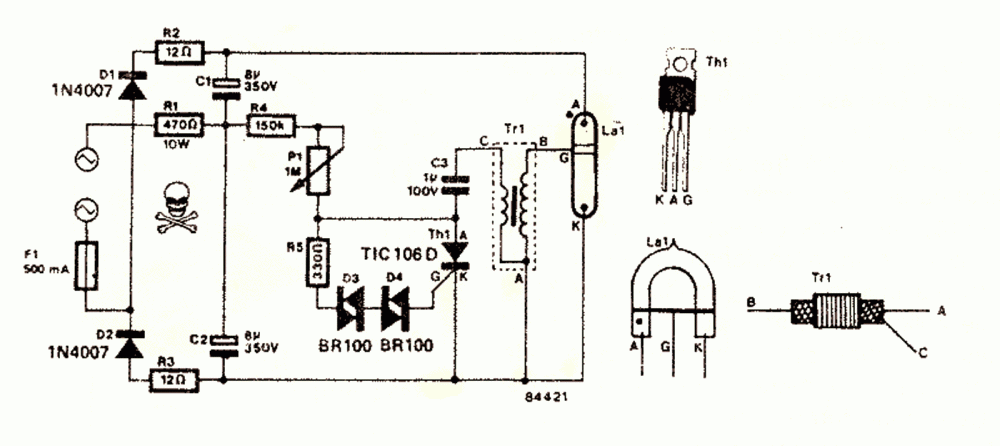
The explanation for the above circuit diagram can be found HERE
Installing the UV Filter Circuit
After making the above circuit, the lamp may be positioned such that the rays are able to traverse past the water from one end to the other end.
Make sure the water is clear and free from dust particles because suspended impurities will block most of the UV rays making life easy for the germs.
Also remember, the flash bulb should be paced directly face to face with the water surface, if it's placed outside the bottle or the container, the material would block most of the rays making things ineffective. You may refer to the following layout example.
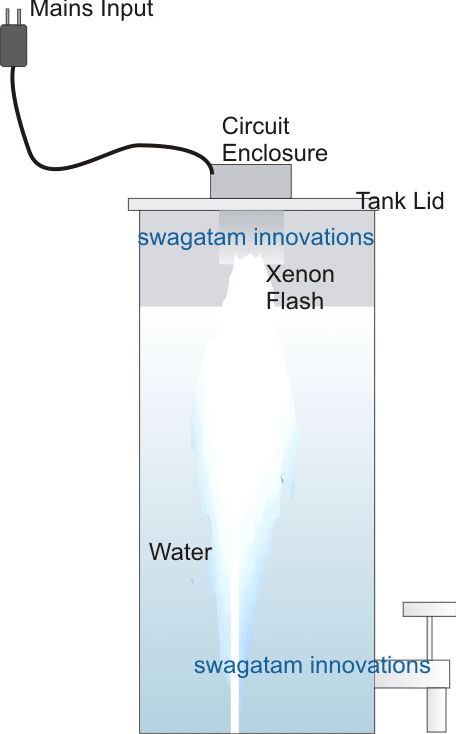
Electric Arc as UV Generator
Another potential source of UV light are electric arcs, we all are aware the adverse effects a welding arc introduces to the person using it, simply shows the radiation level generated from these sources.
We can put these devices for disinfecting water tanks or containers by creating electric arcs inside the tanks or smaller household enclosures.
Ofcourse nobody would want to use welding machine for implementing this, a simpler option would be to use a capacitive discharge circuit as used in motorbikes for generating ignition sparks.
For the above results you may try the following circuit:
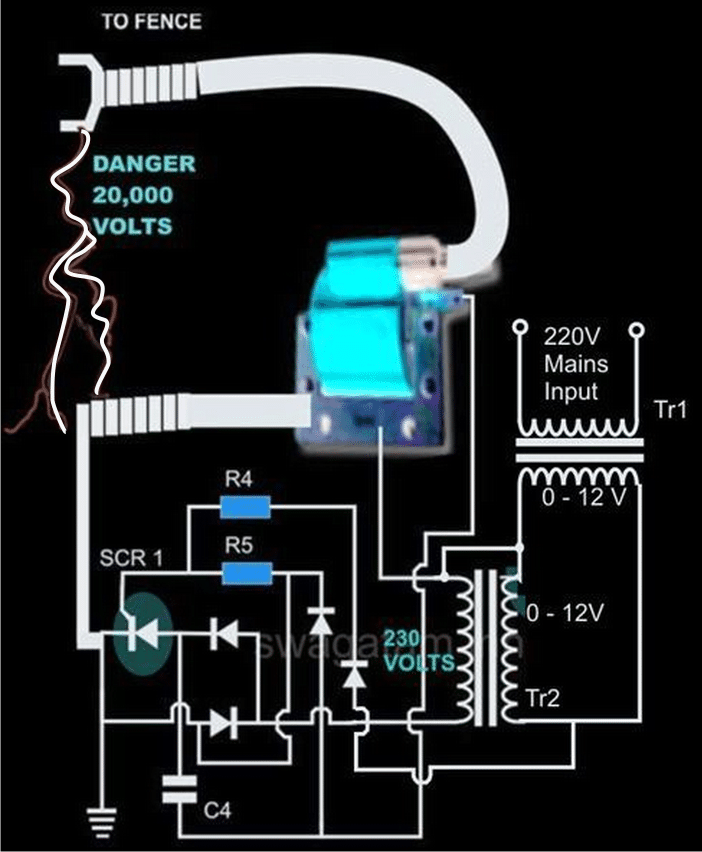
The entire explanation can be read HERE
Parts list
- All Resistors = 100 Ohms, 1 watt
- All diodes = 1N4007
- Capacitor C4 = 105/400V PPC
- SCR = BT151
- Transformer TR1 = 0-12V, 1 amp
- Transformer TR2 = 0-12V, 500 mA
BT151 pinout details
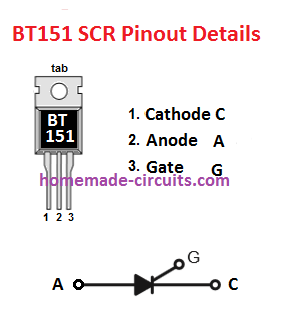
Again as discussed above, the arcs must "see" the water directly and not through a transparent medium or through the enclosure, as shown in the following example:
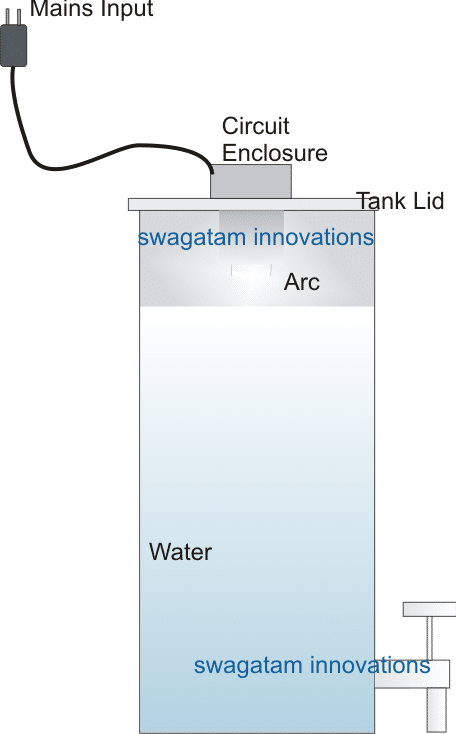
Sir please add tthe making video
This is a great electronic project and they can be fun to construct and demonstrate to a friend however they should not be used in an attempt to sterilize water or other items. Using ultraviolet light to sterilize water or solid items requires specific bandwidths, special transmission media like quartz glass and at least 10 Watts of energy delivered a few inches away from the items to be sterilized and an exposure time of at least five minutes. Often, multiple bulbs are required as any shadowed area will not be effectively sterilized by UV-c. Even with systems that meet the specifications as above, it is prudent to use laboratory testing to confirm the effectiveness of UV systems as they degrade overtime. This is too important to play around with.
Thank you for your feedback, much appreciated! I would like to add that electric arcing also generates ozone which also kills germs and might be useful for reinforcing the above purpose.
Sir in ozon generator you do not mention bt151 pin no and one capicitor velu.please mantion this.i am your big fan thanks in advance
Thank you Ashok, I have added the required details in the article, you can check them out.
How to make a circuit using LPS, SV and float valve if you have all the other components ready.
use woods lamp
Thank sir!
But sir. The circuit from camera just light up for a short moment when i press button. Thus, can it kill all bactera?
You will have to make a switching circuit in order to make the flashing continuous.
Or you can make the circuit described in the above artice
Sir! I want to make this uv purified water for a mini water bottle (1 litre of water) run on a li-ion battery (3.7v, 1a). It is easy for me to put it with me for going anywhere. Could it possible sir?
Hi Seok,
Yes it would be possible, you can buy a readymade camera flash circuit or retrieve it from an old camera and use it for your application.
you are welcome.
No, it's not verified.